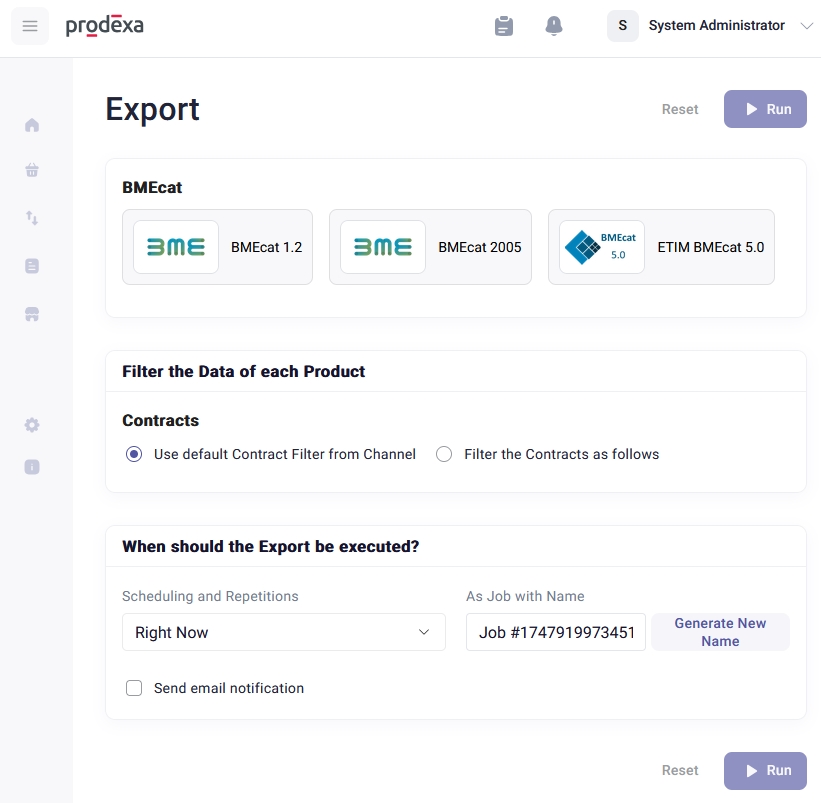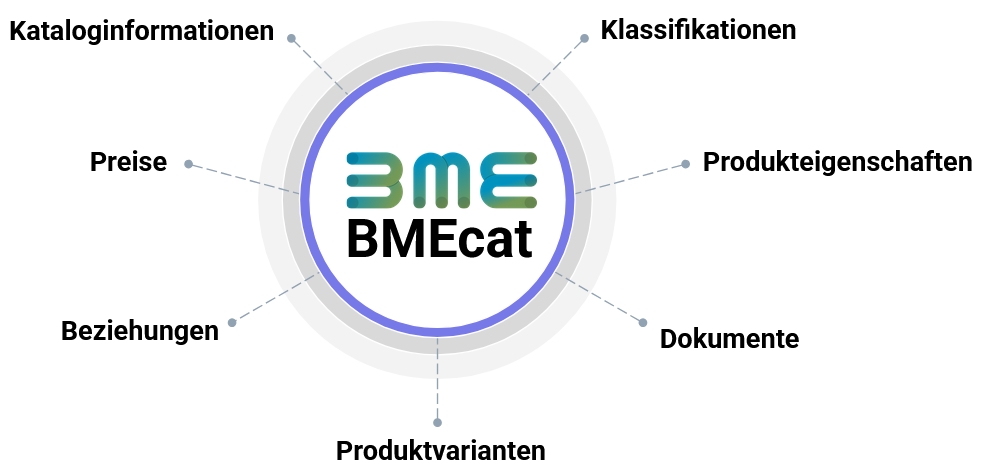BMEcat
BMEcat is a cross-industry standard for the electronic exchange of product catalogs between manufacturers and trading companies.
The standard was developed by the German Association for Supply Chain Management, Procurement and Logistics (BME) and is widely used, especially in e-commerce.
The format is based on XML technology. Manufacturers provide their product data in the BMEcat format so that trading companies can import the standardized catalogs into their own systems and use the information for their procurement and sales processes.
Learn more
Why is BMEcat used?
Standardizing communication in the electronic exchange of product data between companies has many advantages:
- Increased efficiency: The time-consuming manual maintenance and transmission, e.g. by filling out and sending Excel files, is eliminated and taken over by automated systems.
- Error reduction: Automated systems prevent human errors during manual input.
- Compatibility: BMEcat is supported by many ERP, PIM, and shop systems.
- Data quality: The standardization ensures uniform data (e.g., consistent units of measurement) and thus improves data quality.
Therefore, companies using BMEcat can make their processes significantly more efficient and gain a substantial competitive advantage.
Using BMEcat effectively
In prodexa’s software solutions, many functions are natively available to effectively leverage all the benefits of BMEcat.
The most useful applications include the integration of existing systems (e.g., ERP, web shop), the creation of BMEcat catalog files based on your own products, or the creation of a marketplace for central exchange with multiple manufacturers.
Learn more about how prodexa enables standard integration in any industry.
Export options for BMEcat in prodexa PIM
With the export feature in our PIM, product data available in the system can easily be exported into the three most common BMEcat versions.
This way, BMEcat catalog files can be created from the product data maintained in the system.
In addition to the standardized versions published by BME itself, prodexa also supports numerous modified versions (e.g., BMEcat ETIM, connectors for Shopware and other shop systems).
More formats covered by prodexa.
Example of BMEcat export functionality in prodexa PIM

BMEcat in detail
Structure
The core technology behind BMEcat is XML (Extensible Markup Language).
This means that a BMEcat catalog file is a hierarchically structured text file.
This makes it readable by both machines and humans. The key elements in this hierarchy include:
- CATALOG: Information such as language, version, or validity of a catalog
- SUPPLIER: Information about the data supplier (e.g., ID, address)
- BUYER: Information about the data recipient (e.g., ID, address)
- AGREEMENT: Contract data with validity period, e.g., for pricing
- CLASSIFICATION SYSTEM: Classification definitions including characteristics
- ARTICLE (from version 2005: PRODUCT): A product
- PRICE: Representation of product pricing, including tiered prices, currencies, periods, and regions
- MIME: Product-related documents such as images, datasheets, or links
- UDX: Element for transmitting data beyond the standard. Sender and receiver must be aligned

Versions
BMEcat was first released in November 1999 with version 1.0.
Over the years, many additional versions have been introduced. The latest version is 2005.2.
The most commonly used today are:
- BMEcat Version 1.2
- BMEcat Version 2005
- BMEcat Version 2005.2
In addition, several modifications of the BMEcat standard have been made and published by other organizations.
An example is the ETIM BMEcat, based on version 2005, or
eclass BMEcat.
More information on ETIM.